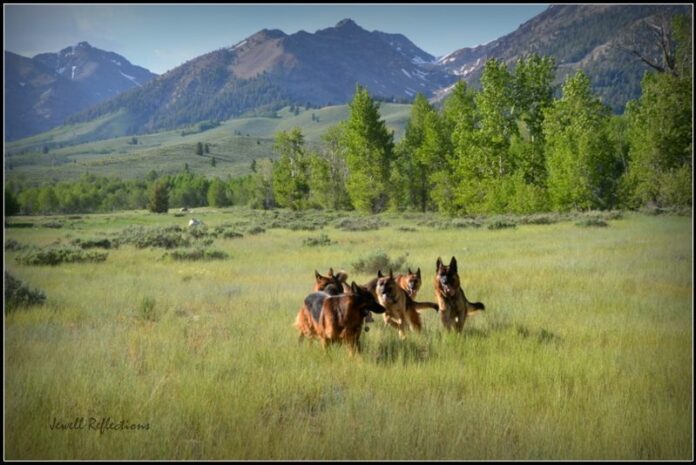
By Fran Jewell
Most of us realize that teaching our dog to “come” is extremely important, especially in this area where dogs are allowed, many times of the year, to run free on Forest Service land (except during the summer) and on many trails. Due to the active lifestyle here, our dogs go with us everywhere.
Contrary to popular belief, a dog running free is not a God-given right of every dog. As a responsible dog owner, we need to understand that for the safety of other people and dogs, and the safety of our own dog, he must have a 100 percent recall. An 80 percent “come” command is not acceptable if your dog is going to be off leash. I hear often that, “My dog comes extremely well, except when there is a distraction!” That is not a reliable or extremely good “come” command and will eventually get that dog into trouble, either with wildlife, a disabled person with an invisible disability, or another dog.
Everyone has the right to be on the trails, but dogs must EARN the right to run free safely and responsibly.
A dog that is well-trained with a 100 percent recall can come in a second even in the face of ANY distraction. If your dog is not friendly with other dogs and he has a recall that is rock solid, he should be able to return to his owner when told to, regardless of anything. This, by itself, can prevent unwanted confrontations with other dogs, or people, or even wildlife. Even if YOUR dog may be friendly, it doesn’t mean another dog is. Having a friendly dog is NOT an excuse for having a poor recall.
It does take training to get to this point. Training should start the minute a dog or puppy comes home. Waiting until your pup is six months old or even after his shots are done can make the process so much harder. You must be determined to practice and REQUIRE “come” for the first year in all situations. Setting your dog up for success is hard, but planning ahead can get you there.
It is important to remember that when a puppy reaches about 19 weeks old, he is programmed by Mother Nature to follow the leader. That means that you might think your pup has a perfect “come.” At that golden age of 19 weeks (give or take), pups developmentally begin to gain confidence and independence. Almost always a pup will start looking at you when you say “come,” then continue on his quest for that special aroma or dog friend they have found. If you are not prepared with a game plan to require “come,” then the pup learns he doesn’t have to come if there is a distraction. Now you have begun a slippery slope of an unreliable “come” command.
Not only must you have a back-up plan on how to get your dog back once you call him, you must be consistent every time, especially during that first year. This means everywhere, including in the house, in the backyard, on a walk down the street, and so on. You must be consistent and require that your dog “come.”
A 100 percent “come” command can get your dog out of trouble on so many levels. It should be a priority for you to train for the safety and wellbeing of your dog and you! Train. Run. Come.
Fran Jewell is an IAABC Certified Dog Behavior Consultant, NADOI Certified Instructor and the owner of Positive Puppy Dog Training, LLC in Sun Valley. For more information, visit positivepuppy.com or call 208-578-1565.


